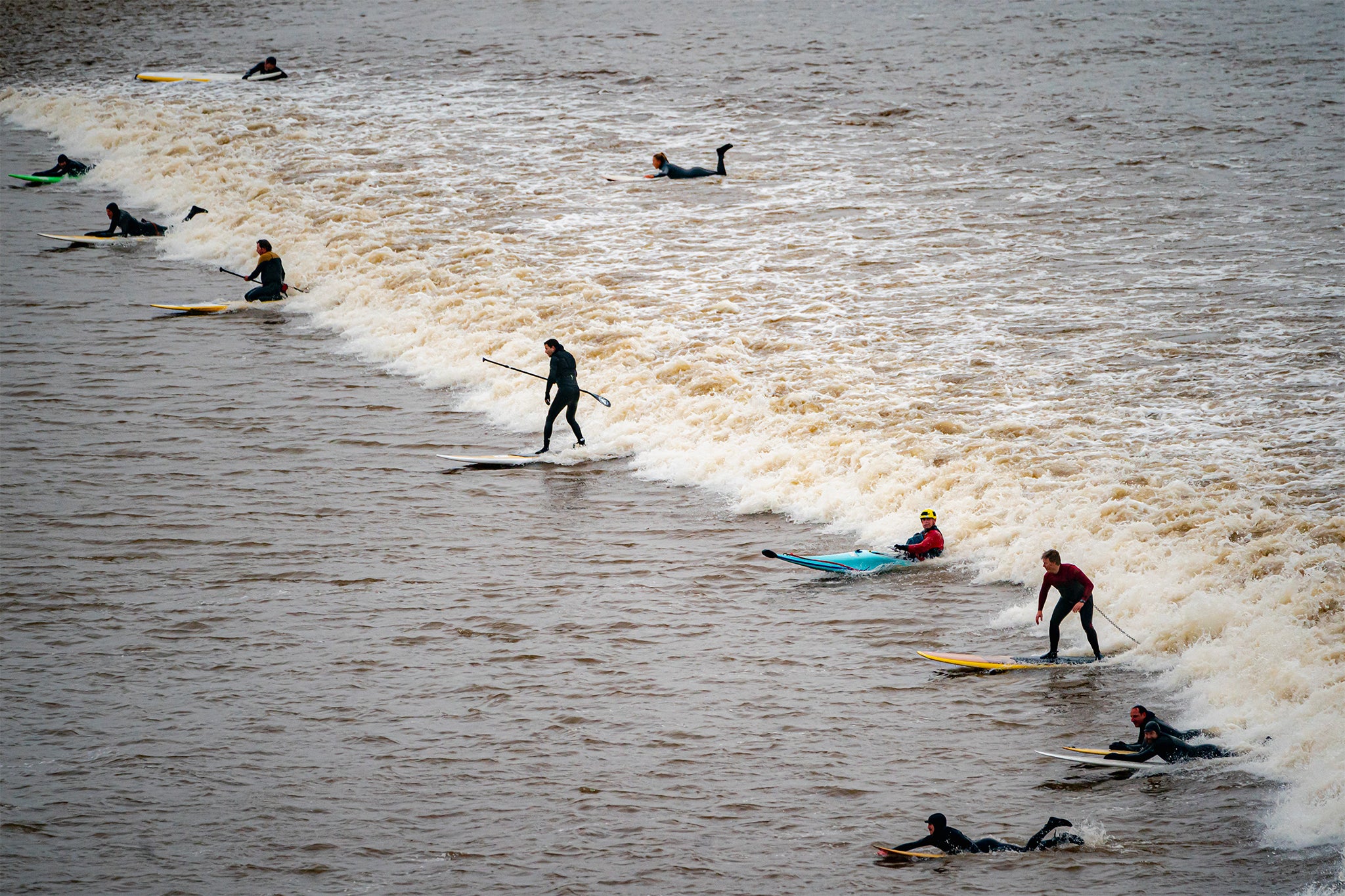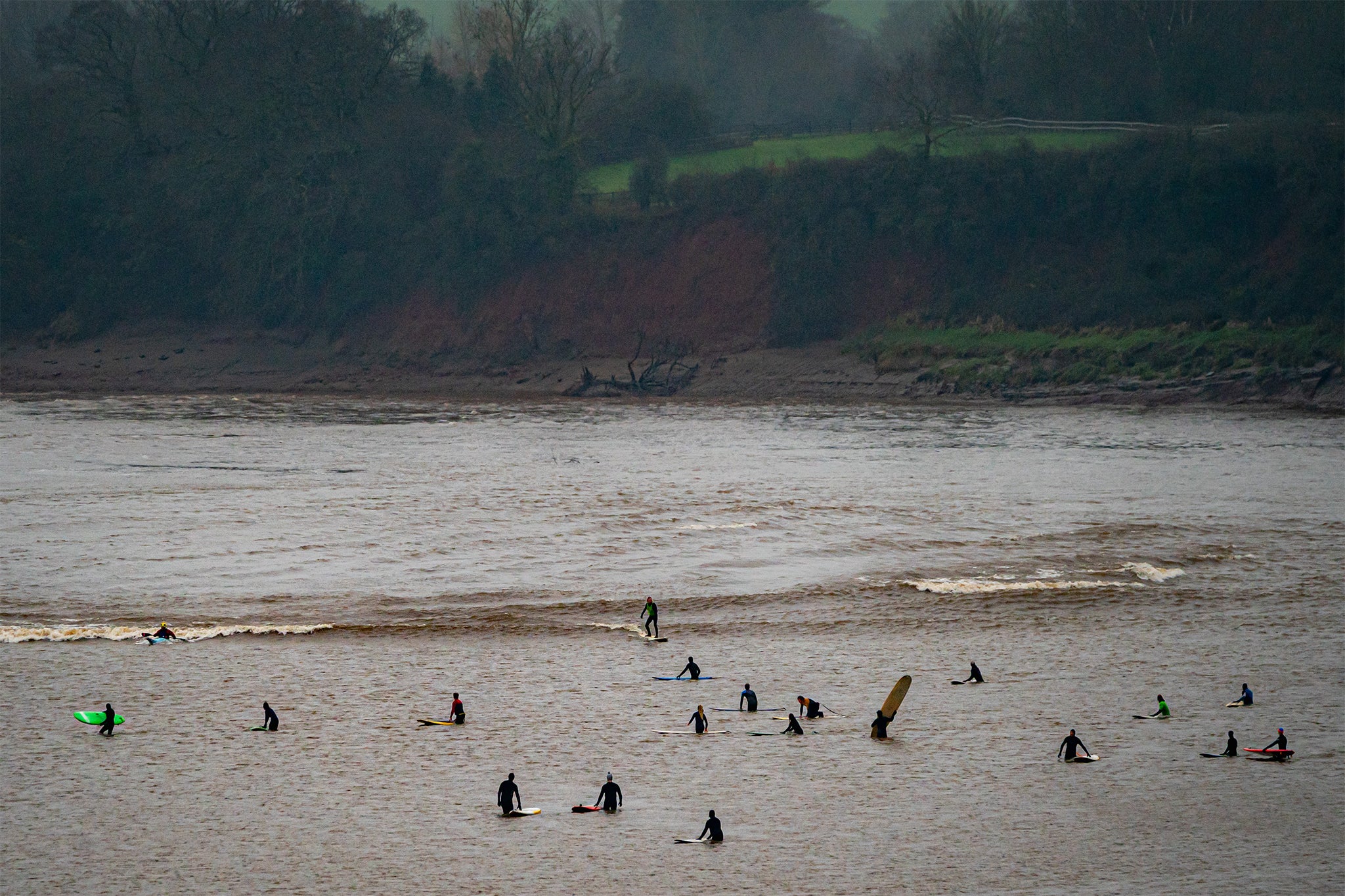Surfers ride huge Severn Bore tidal wave in Gloucestershire
A bore is an upriver surge of tidal water, forming a fast-moving wave that can travel for several miles
The only five-star bore this year is ripping through the Severn Estuary on Tuesday morning, to the joy of surfers and spectators alike.
A bore is an upriver surge of tidal water, forming a fast-moving wave that can travel for several miles. Since the Severn Estuary has one of the largest tidal ranges in the world – about 13 metres – its bores are massive to match.
Several four-star bores are expected later in the week, but the five-star bore has seen crowds gather on a rainy Tuesday morning, with surfers enjoying the waves.
Due to the excessive rainy weather of the past month, the Environment Agency has put in place red alert warnings for the River Severn and River Wye.
Lloyd Russell, who has travelled from Cornwall to surf the Severn Bore, told BBC’s Today Programme described the experience as “quite fun”, despite the mud and smell.

He said: “It’s muddy, it’s dirty, it’s not glamorous. Everything smells. A little bit of poo and muddy rivers.
“You get out of the river and you’re absolutely caked in mud. It’s quite fun really. Sliding down the river banks.”
The Independent has compiled below everything you’d want to know about the Severn Bore:
What is the Severn Bore?
When waves enter the Bristol Channel, and subsequently the River Severn, they bottleneck, slowing and narrowing substantially to fit the decreasing space.
The funnelled water begins to build in height, exacerbated by the increasingly shallow floor of the estuary. Above a sandbar the channel narrows sharply again, concentrating the bore, creating the iconic roaring sound that accompanies the surge upstream.

When did people first start surfing it?
In the pre-surf era the bore was a nuisance to ships sailing up the channel to Gloucester Docks. Skilled captains could make it upriver without getting gored, but downstream journeys in bore season usually required at least one layover.
The first man known to have surfed the bore was Jack Churchill – a World War II veteran famous for carrying a Scottish broadsword into battle, and being the only allied soldier to kill a man with a longbow. An extraordinarily eccentric man, he surfed a mile and a half upriver in 1955.
A group of Cornish lifeguards followed his feat in 1962, and the longest successful surf now yields a spot in the Guinness Book of Records. The top spot has changed hands many times over the years, but the current holder is Steve King, a Gloucestershire rail engineer, who surfed the Severn for 7.6 miles in 2006.
1966 saw the highest ever recorded bore – a whopping 2.8 metres.

How can you take part?
Unfortunately surfing this year’s five-star bore has come too late for you. However there is a full timetable at the Severn Bore website, which predicts bore time and quality a year in advance, and observers often line the banks hours in advance to watch the bore unfold.
Participants should enter the water at least 20 minutes before the bore’s ETA, as the surges do not always keep to schedule.
Additional reporting by PA
Join our commenting forum
Join thought-provoking conversations, follow other Independent readers and see their replies
Comments
Bookmark popover
Removed from bookmarks